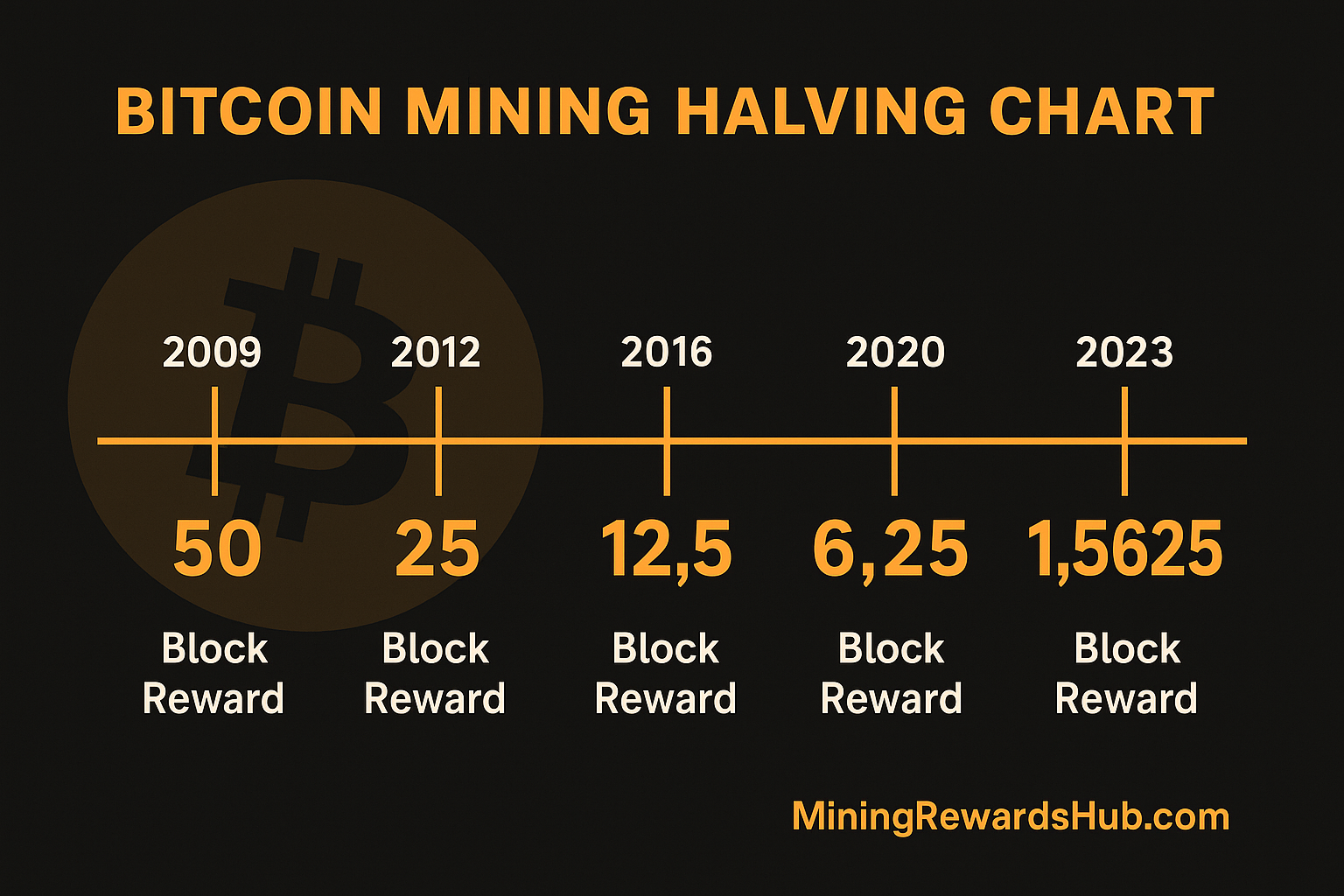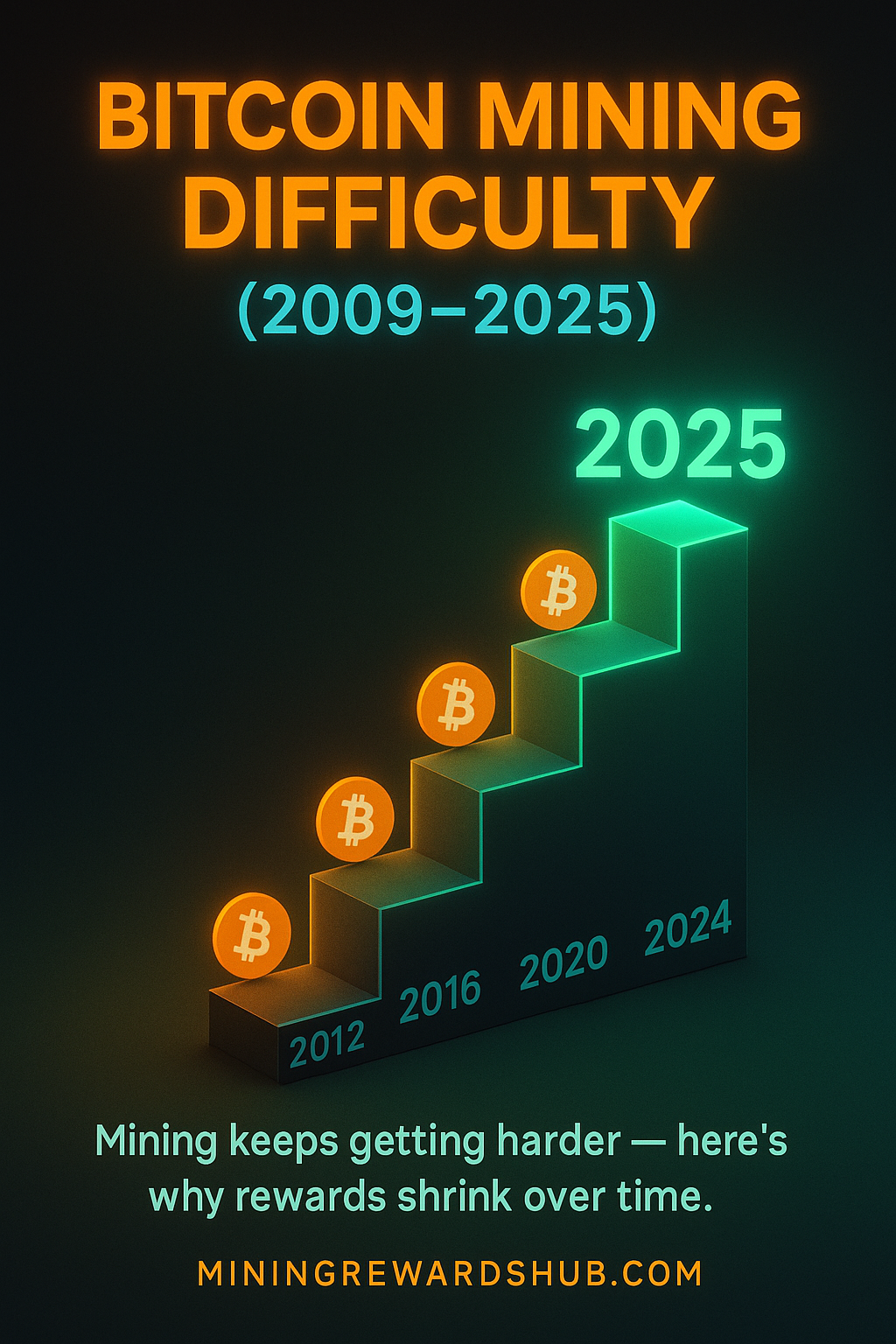Bitcoin Halving (Timeline & Impact)
Halving events reduce the block reward roughly every four years, cutting new BTC issuance and increasing scarcity. They are the backbone of Bitcoin’s monetary policy and a major driver of miner strategy.

Mining Difficulty (Why It Rises)
Difficulty adjusts with network hash power to keep blocks ~10 minutes apart. More competition means higher difficulty, which lowers expected rewards per unit of hash power unless you scale efficiently.

Cloud Mining: Should You Do It?
Pros
- No hardware costs
- Instant start
- No maintenance
- Accessible anywhere
Cons
- Service fees
- Lower control
- Provider trust required
Cloud mining works best with transparent, infrastructure-backed providers. Read our full guide: Should I Do Cloud Mining?
Try a Free 16 TH/s Cloud Mining Trial
Experience real mining rewards without buying hardware or paying for electricity.
Start Free Trial →Plan with Live Data
Check today’s difficulty, rewards, and projections on the dashboard.
Open MiningRewardsHub Dashboard →Frequently Asked Questions
What is Bitcoin mining?
Using hash power to find valid blocks and secure the network. Miners earn rewards via the block subsidy and transaction fees.
How do halvings change payouts?
Each halving reduces the block reward by 50%, so miners earn fewer BTC per block. Efficiency and scale matter more over time.
Why does difficulty keep going up?
More miners join during bullish periods or after hardware improvements, so difficulty rises to maintain ~10-minute block times.
Is cloud mining right for me?
If you want exposure to mining without hardware costs or maintenance, cloud mining with a trusted provider can be a smart starting point.